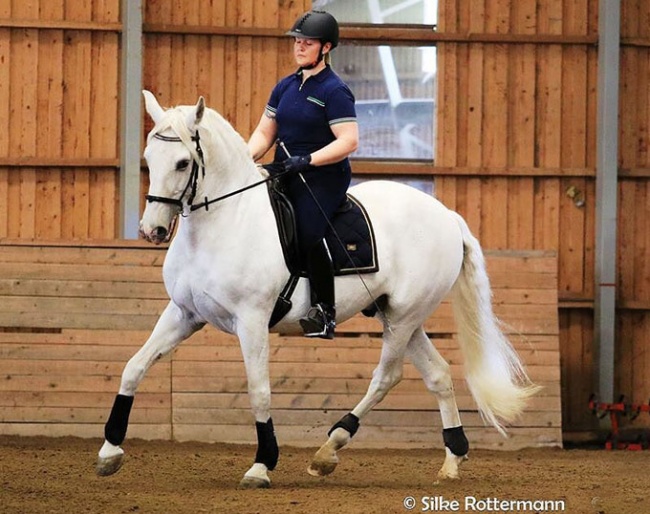
While the approaches training horses are varying a lot these days, from a horse's health point of view there are only two kind of training approaches: The one that fight against the horse's body and the one which helps the horse's body. The former leads to tense and artificual moving horses which will suffer more or less severe damage due to it.
The latter creates a beautiful moving horse which is making full use of its body and expresses that kind of balance under the saddle like in freedom. Good movement is elastic and dynamic, it is regular, happens in balance and it looks easy. Such horse is not only a joy to ride and watch, but represents the result of a training that allows the body's structures to function well and keeps the horse healthy.
Fascia: Fascinating stuff to be discovered
Fascia research is going forward with a high speed. Although it is not a new discovery as a stucture, there has been a growing interest lately for understanding these structures more deeply.
For for a rider and trainer it is useful to understand the functions of fascia or connective tissue (the name is depending on the respective source) in order to create a healthy development in the daily training. If we treat the body of our equine athlete well in that sense, we create conditions for a healthier movement and therefore a longer career in sports.
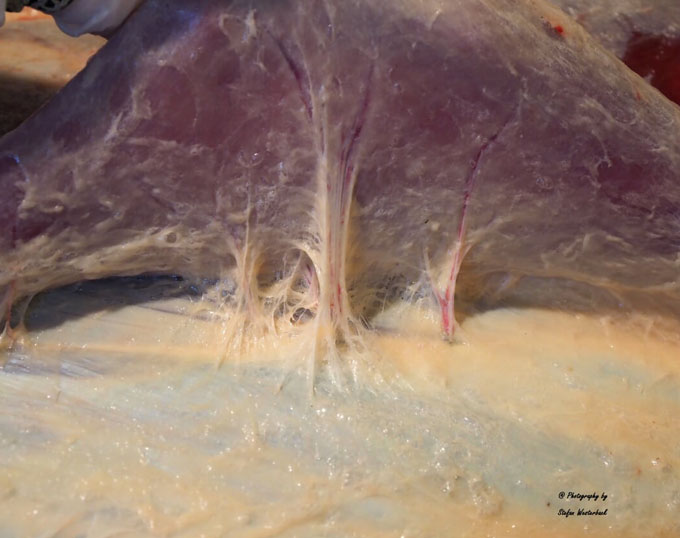
scapula region.
Fascia (or: connective tissue) is the largest sensory organ of the body. It is a non ending cobweb- like unity which travels through the entire body. Fascial structures are connected all the way from skin to muscles and to the bones and tendons, they wrap around nerves and veins. They keep the body and its organs organized and are there to create the shape (architecture) and function of the body. Fascia is also necessary for the muscle function. About 30% of force transmission happens through fascia.
So there is always something going on in the body. Depending on how we use our body or that of our horse, demolition and building in structures will happen, and fascia adapts to these changes in its own way. If we move with tension, the body reacts to that and starts to thicken and stiffen the fascia. As fascia is a very sensitive tissue with a lots free nerve endings (there are six to eight times more receptors in fascia than muscles), if there is a problem, this tissue can become very sore.
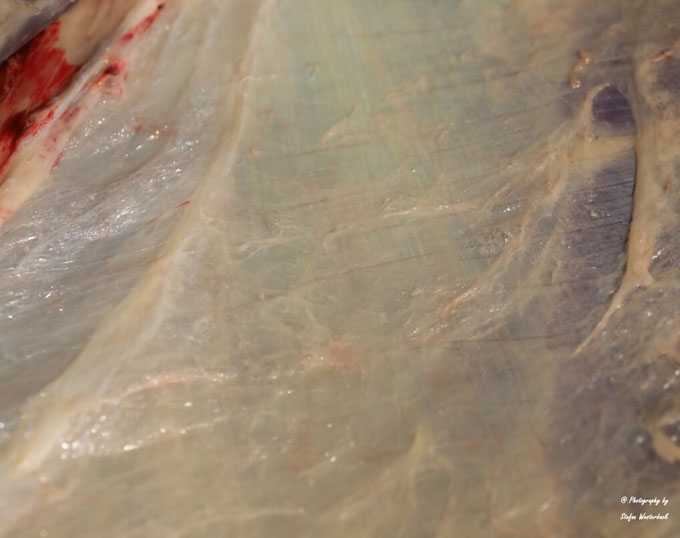
tensional lines that can be seen on the deep
fascia that is below the loose connective tissue layer
Different structures
In the horse's body everything is connected in one or the other way. But we can roughly divide fascial structures in a few categories, and each layer has its own purpose in the bigger picture. Under the skin one of the first things we see is loose connective tissue, the spider- web look-alike, which under normal conditions is a structure very rich in moisture. Below skin we also have the superficial fascia, followed by three layers of deep fascia above the muscles. These deep layers have an important role in creating the 3D- functionality in the body. And because of this 3D function we can also observe compensations in the body which travel quite far away from the original source. This means that for example there is a restriction in one or several movement directions, it will affect more than just that area. This deep fascia provides protection for the muscles and is part of a communication network transferring signals between all parts of a horse's body. Some areas of deep fascia are also attached all the way to the bones or the epimysium which cover muscles.
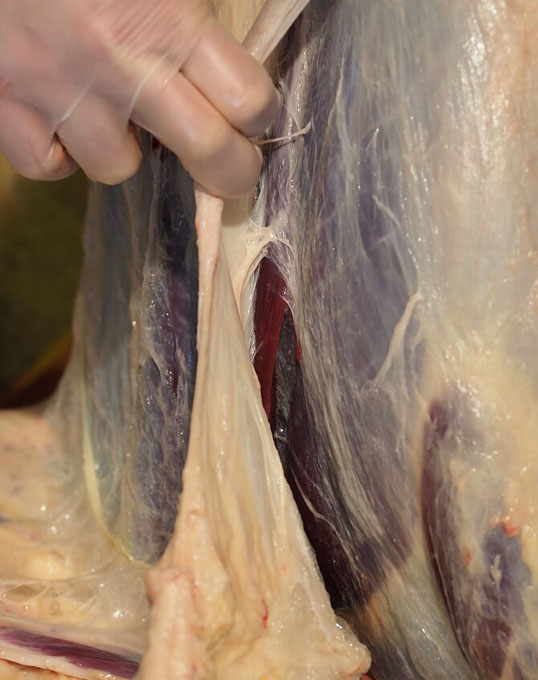
and layers meet in certain points and larger
areas.
This has an effect on the movement as it not only creates local restrictions, it also can have an effect on other body parts and it takes a long time to get the movement back towards normal, if that is possible at all.
After injuries it is very important to look after scar tissue and initiate all directions of movement in the daily training. That is necessary to help getting the moisture back to the structures. So we need movement that is variable and of good quality. Good quality does not mean the horse is a big mover, but that it moves elastic and free. Any tense movement will start to glue the structures together or make this condition even worse.
On areas with force transmission, where the movement changes and where stability is needed, these are covered with thick and dense aponeurotic fascia which is created of many layers. This can be seen in the lumbar back and stomach areas. On areas where more movement is needed, the fascia is thinner, providing proprioception and possibilities for refined movement. Some areas are more sensitive than others, and these areas, for example over the hocks and front knees, are called retinacula areas. Retinacula areas exist all over the body, these areas sense movement and postures even more precisely.
Fascia and training
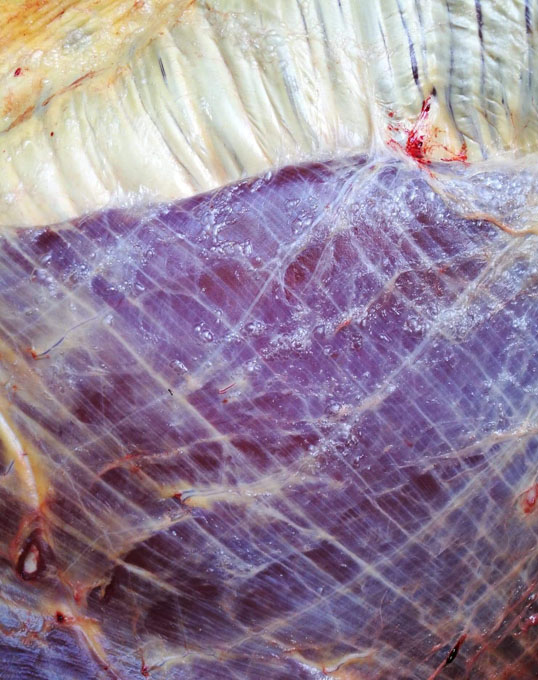
What sounds logical requires a system based on classical principles and which offers simple and applicable strategies that lead us reliably through the levels.
With the following parts of that series I aim to offer exactly these strategies which can help you training your horse in a healthy way. Because no matter how good the training is, if the body structures of a horse develop well and remain healthy, is also hugely dependant on the management outside the saddle: if the horse is going in a field or not, if it can use its body freely and in many different ways, on different surfaces. Also the horse's overall state of health has a big effect on the fascia.
by Niina Kirjorinne - Photos © Stefan Westerbach - Silke Rottermann
Related Links
Meet Niina Kirjorinne, Classical Dressage Rider and Physiotherapist
Effect of Noseband Positioning to Fascial and Neural Dynamics of the Head.